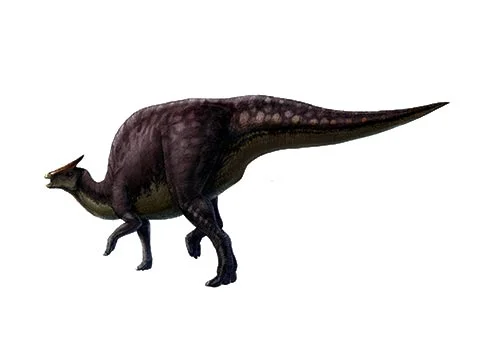Saurolophus (lizard crest)

Sore-o-loe-fus
Barnum Brown - 1912
Herbivore
Estimated 10 meters long
Euornithopod
S. osborni (type), S. angustirostris
Canada - Alberta - Horseshoe Canyon Formation. Mongolia - Nemegt Formation. Possibly also USA - California - Moreno Formation and China - Heilongjiang Province
Late Cretaceous, 80-70 million years ago
Saurolophus Facts
Saurolophus, meaning “lizard crest,” is a genus of hadrosaurid dinosaur that lived during the Late Cretaceous period, about 70-80 million years ago. Its fossils have been found in North America and Asia, and it is known from several well-preserved specimens.
Saurolophus was a large, bipedal herbivore that measured up to 10 meters (33 feet) in length and weighed around 4-5 tons. It was characterized by a distinctive bony crest on the top of its head, which may have served as a resonating chamber for producing low-frequency vocalizations. This crest is the reason why it was named “lizard crest”.
Saurolophus had a beak-like mouth and hundreds of tightly packed teeth that it used to crop vegetation close to the ground. Its jaws were powerful and could generate significant force, allowing it to grind up tough, fibrous plants. It had a long tail and sturdy, column-like legs that allowed it to move efficiently across the landscape.
Like other hadrosaurids, Saurolophus likely lived in herds, which may have provided some degree of protection against predators such as Tyrannosaurus and Albertosaurus. It may have used its size and strength to fend off predators or escape from danger.
Saurolophus is an important and fascinating dinosaur that has provided valuable insights into the behavior and ecology of hadrosaurids during the Late Cretaceous period. Its distinctive bony crest and herd behavior are particularly interesting aspects of its anatomy and behavior, and continue to be a subject of study and fascination for paleontologists and dinosaur enthusiasts alike.



